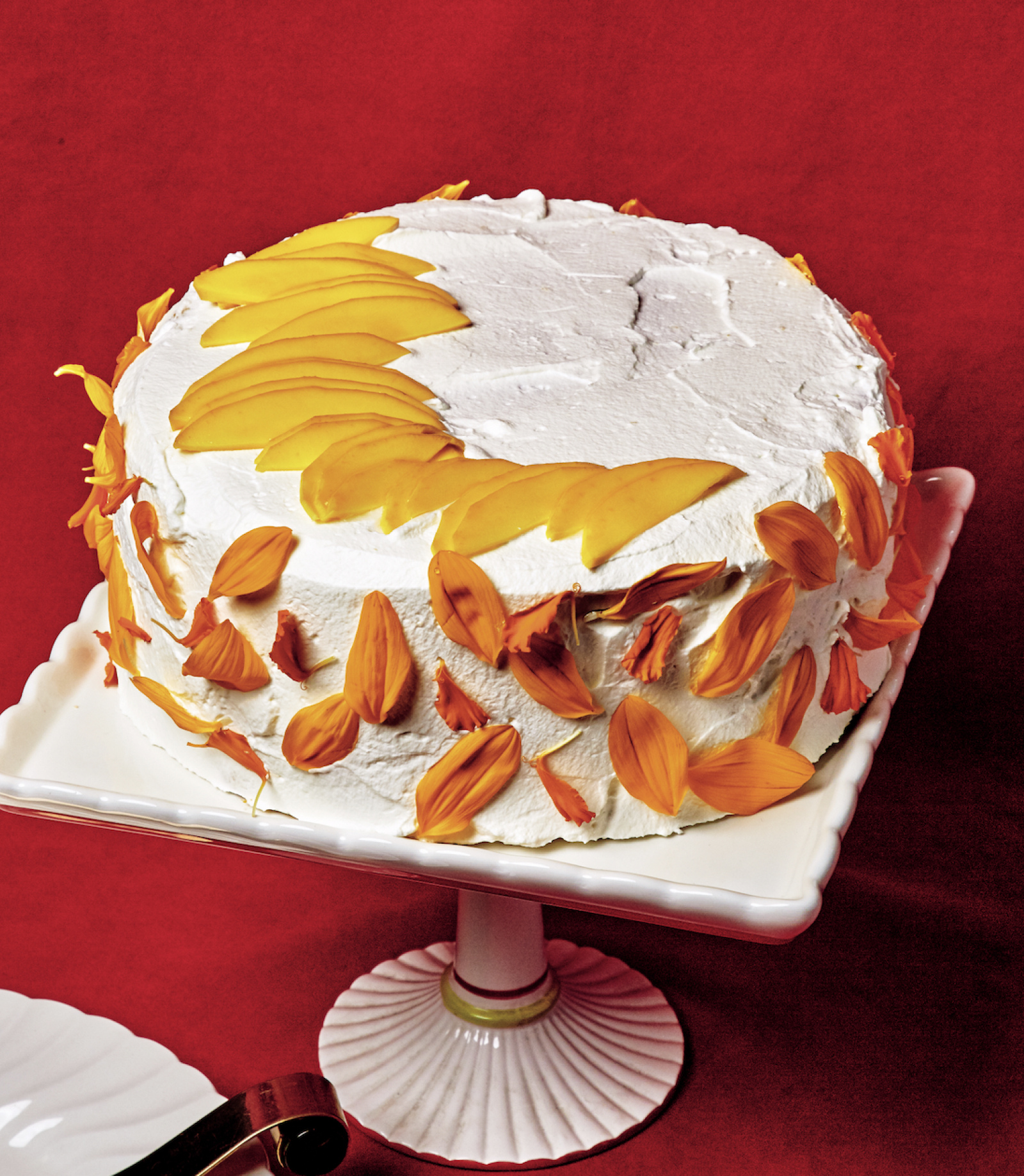Your email address is required to begin the subscription process. We will use it for customer service and other communications from Milk Street. You can unsubscribe from receiving our emails at any time.

Mango-Turmeric Chiffon Cake
My lola made this chiffon cake—akin to Taisan but layered with fresh, ultra-ripe mango, and a Red Ribbon Bakeshop classic— for many birthdays, in many shapes: sheets, rounds, dramatic tiers. My mom made it, too, and devoted serious time to decorating, drawing from a suitcase full of vintage piping tips and pillars. My version is humbler: I adorn it with nothing more than sunflower petals, a nod to my mom’s other great hobby, floral arranging. (Be sure to use organic flowers that haven’t been exposed to pesticides, or look for other edible flowers at the market or online—or be like my mom and freestyle your own decoration.)
You want the ripest fruit, preferably a Manila mango from the Philippines (which the government has officially christened the Manila Super Mango) or a Mexican Ataulfo (also known as champagne mango), descended from Manilas brought over by Spanish galleons. The whipped cream frosting gets a little cream cheese, to keep it from deflating and give the cake a touch of salt. (Note: There’s no sugar in the frosting, because I think the sweetness of the chiffon and the mango is enough, but you’re welcome to adjust to your taste.) And I add a swirl of turmeric to half the cake batter, for a tie-dye effect. It brings a subtle earthiness—and is good for you, too.
Reprinted from the book Filipinx: Heritage Recipes from the Diaspora by Angela Dimayuga and Ligaya Mishan, published by Abrams. Photographs copyright © 2021 by Alex Lau
Ingredients
-
2
tablespoons unsalted butter, melted
-
2
cups (250 g) all-purpose flour, plus extra for dusting
Directions
-
01Preheat the oven to 350°F (175°C). Take out two 8-inch (20 cm) round cake layer tins. (Or a 10 by 12-inch/25 by 30.5-cm baking tray, if you’d prefer to make a single sheet cake.) Brush the inside of the tins with the melted butter, then dust with flour, gently shaking and tapping the tins so the flour infiltrates each corner. Remove any excess flour—which might otherwise clump on the surface of the cake—by flipping the tins over and tapping a few times.
Pardon the interruption
You need to be a Milk Street Digital Member to see the full recipe
JOIN MILK STREET DIGITAL & PRINT
12 WEEKS FOR JUST $1
and get access to all of our recipes and articles online, as well as in print.
GET DIGITAL & PRINT
